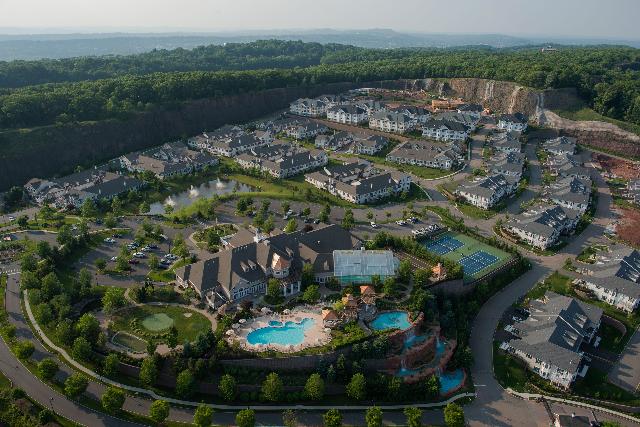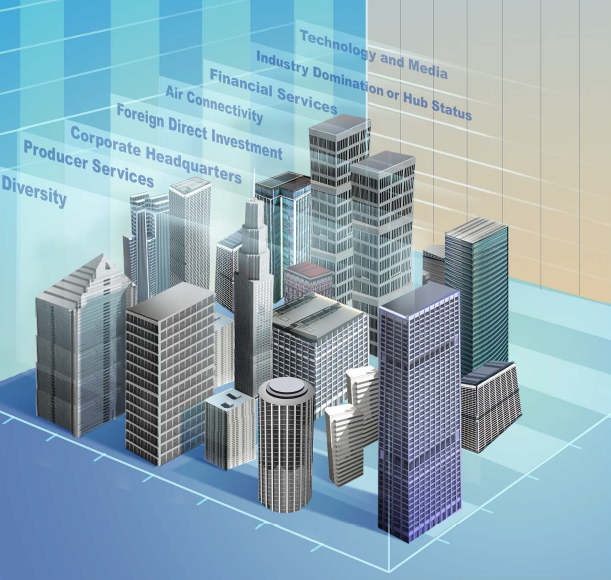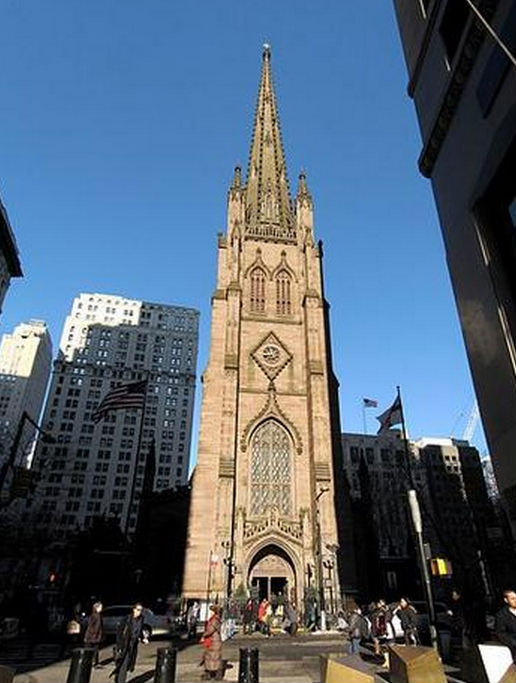The New War Between the States

AP Photo/Carlos Osorio
In this disgusting election, dominated by the personal and the petty, the importance of the nation’s economic geography has been widely ignored. Yet if you look at the Electoral College map, the correlation between politics and economics is quite stark, with one economy tilting decisively toward Trump and more generally to Republicans, the other toward Hillary Clinton and her Democratic allies.
This reflects an increasingly stark conflict between two very different American economies. One, the “Ephemeral Zone” concentrated on the coasts, runs largely on digits and images, the movement of software, media and financial transactions. It produces increasingly little in the way of food, fiber, energy and fewer and fewer manufactured goods. The Ephemeral sectors dominate ultra-blue states such as New York, California, Oregon, Washington, Massachusetts, Maryland, and Connecticut.
The other America constitutes, as economic historian Michael Lind notes in a forthcoming paper for the Center for Opportunity Urbanism, the “New Heartland.” Extending from the Appalachians to the Rockies, this heartland economy relies on tangible goods production. It now encompasses both the traditional Midwest manufacturing regions, and the new industrial areas of Texas, the Southeast and the Intermountain West.
Contrary to the notions of the Ephemerals, the New Heartland is not populated by Neanderthals. This region employs much of the nation’s engineering talent, but does so in conjunction with the creation of real goods rather than clicks. Its industries have achieved generally more rapid productivity gains than their rivals in the services sector. To some extent, energy and food producers may have outdone themselves and, since they operate in a globally competitive market, their prices and profits are suffering.
Despite deep misgivings about the character of Donald Trump, these economic interests have led most Heartland voters somewhat toward the New York poseur, and they are aligning themselves even more to down-ticket GOP candidates. In generally purple states like Missouri, Ohio and Iowa, where manufacturing is key, Trump still leads—at least he was before the latest spate of Trump crudeness was revealed, this time regarding women.
The Republicans’ strongest base is in the energy belt where Trump has suggested policies that call for greater domestic production. This naturally resonates with businesses and working people in states ranging from Texas, Oklahoma and Louisiana to West Virginia, Wyoming and Alaska, which have borne the brunt of nearly 100,000 layoffs so far this year. It’s no surprise that all of these states constitute increasingly a lock for the GOP.
Historical Precedents
The conflict of economic interests has long defined American politics. America’s revolution was largely started by New England merchants rebelling against colonialist policies that sought to strangle our nascent capitalism in its infancy. The great economic tensions of the early 19th century centered on a struggle between the Jeffersonian and Jacksonian yeomanry and the powerful merchant class in the great Northeastern cities. A major point of contention was around such issues as the establishment of a national bank and high tariffs, bitterly opposed in the nation’s interior and the South.
The biggest national crisis in our history underscored this clash of competing economic interests. Although the galvanizing issue on both sides of the Mason-Dixon line was slavery, the Civil War was also a war, as Karl Marx suggested, of competing economic visions: the agrarian, slave-fueled economy of the South vs. the rapidly industrializing Northeast and Midwest.
Post-war conflicts revolved about hostility between the urbanizing North and the more rural South and West. Finance and industrial capital, usually in cities like New York and Chicago, was largely Republican and protectionist. Democrats tried to cobble a coalition of Southern agriculturalists and the big city, ethnic working class. With the onset of the Great Depression, Democrats gained primacy by melding this coalition to a rising and increasingly progressive professional class.
In the past, Democrats competed in the Heartland and backed its key industries. Lyndon Johnson was a proud promoter of oil interests; Robert Byrd never saw a coal mine he didn’t like for all but the end of his career. Powerful industrial unions tied the Democrats to the production economy. Now those voters feel abandoned by their own party, and even are dismissed as “deplorables.”
Increasingly few Heartland Democrats, outside of some Great Lakes states, win local elections. In the vast territory between Northeast and the West Coast, Democrats control just one state legislature, the financial basket case known as Illinois.
For their part, Republicans are becoming extinct in the Ephemeral states, a process hastened by the growing concentration of media on the true-blue coasts. Wall Street, Silicon Valley and Hollywood have been drifting leftward for a generation, and Trump has accelerated this movement. Joined by the largely minority urban working and dependent classes, progressives now have a lock on the Northeast and the West Coast.
The New Battle Lines
The new conflict between regions reflects a conflict between different ways of making money. Ephemeral America’s media and academic adjuncts generally portray the New Heartland’s economy as exploitative and environmentally harmful. A massive oil discovery in Alaska may be welcome news there, but a horrific prospect in places like Seattle, New York, or San Francisco.
Climate change increasingly marks a distinct dividing line. Manufacturing, moving goods, industrial scale agriculture, fossil fuel energy all consume resources in ways many progressives see as harming the planet. Progressives threaten these industries with increasingly draconian schemes to reduce greenhouse gas emissions. Gone are the days of supporting moderate shifts — which could work with some Heartland economies — from coal to gas and improving mileage efficiency.
Instead the demand from the left is for a radically rapid de-carbonization, which will reduce jobs in the Heartland and lower living standards everywhere. In California, Jerry Brown is fretting about ways to curb cow flatulence, an obsession that is unlikely to be popular in Kansas, Nebraska or Iowa.
These divergent politics between states are accelerating the gap between the two economies. Since 2010, as the recovery kicked off, the big industrial job growth took place mostly in the Heartland — in Detroit, Charlotte, Atlanta, Phoenix and Houston. New York, Los Angeles, Philadelphia and Boston all managed to lose jobs. Since 2000, Los Angeles and New York together have lost over 600,000 manufacturing positions.
As industry weakens in an area, opposition to radical climate mitigation declines. Someone representing an increasingly de-industrialized east Los Angeles or Brooklyn feels no pressing reason to advocate for industry. High energy and housing prices, both connected to draconian climate change policies, gradually empty out the middle-class families, the demographic bulwark of the GOP. Meanwhile, in their coastal bastions, the grandees of Silicon Valley and Wall Street increasingly disdain anything reliant on fossil fuels.
The New Heartland has reason to resist such policies, which could turn what have been burgeoning economies back into backwaters. Regulatory regimes that radically boost energy costs, as in California and New York, hasten de-industrialization. The rapid decline of areas such as interior California and upstate New York testifies what may be in store for the Heartland under a Hillary Clinton administration and a Congress controlled by the Democratic Party.
This conflict will deepen in light of the ongoing gradual decline of key tangible industries — durable goods like heavy equipment and car manufacturing, fossil fuel energy, agribusiness. Back in 2012, all these sectors were doing well, something that helped President Obama win much of the old Rust Belt. In the current economic climate Republicans could still make significant progress, even with Trump at the top of the ticket.
In the process, the GOP, to the horror of many of its grandees and most entrenched interests, is becoming transformed. It is becoming something of a de facto populist party, based in the New Heartland, while the Democrats remain the voice of the coastal oligarchies who almost without exception back Hillary
In the immediate future, given the likely trajectory of a Clinton presidency, things may get tougher times for the New Heartland and its industries. Federal regulators will ape their California counterparts, extending controls that seem sensible in San Francisco into dramatically different geographies.
But don’t count the New Heartland, or the GOP, out. Once Trump is gone, there will be enough political will and money to mount a counter-offensive against the Ephemerals. The new War Between the States will not end in November. It will have hardly just begun.








